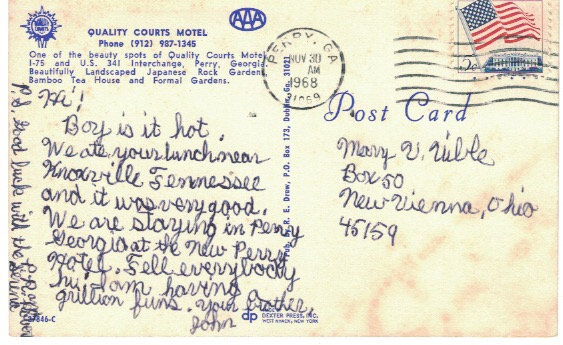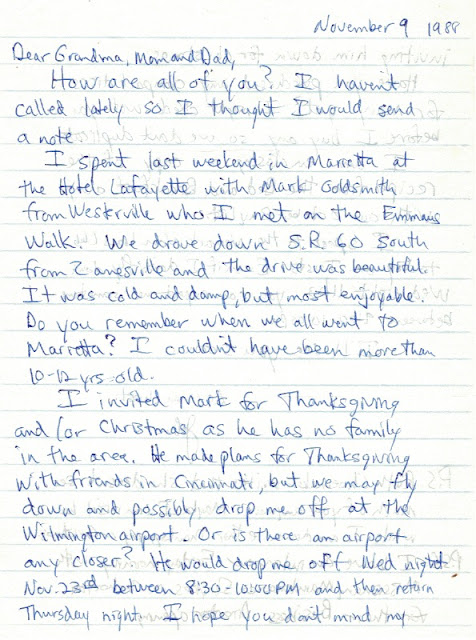The following clipping is from the Dayton Daily News, Saturday, Nov. 12, 1988. Stories by Bob Batz, Photos by James Rutledge.
Note: Wells Mfg., the company and property in New Vienna, Ohio, was sold in 1999, and is no longer owned by the Uible family. For more information see
1995 Wells Mfg. Business Report.
 |
| Above: Virginia Perkins monitors the dipping of new rubber balls into various bright colors of paint. On right: New jump ropes turned out at the Wells plant. |
 |
| Above, Mildred Brooks, a 25-year employee of Wells Manufacturing, watches a machine combine strands of colorful thread into jump ropes. At right Robert Mongold (name is misspelled in caption) inspects a gate of new jacks, fresh from the molding machine. |
 |
| Wells Manufacturing owner Harold Uible |
NEW VIENNA –– Sometimes when Mildred Brooks is working at her braiding machine at Wells Manufacturing Co., she catches herself remembering another time, a time when she got together with other girls on the sun-splashed playground at a little elementary school near Vanceburg, Ky., to do swishes and sweep-the-floors while singing, Out goes the doctor, out goes the nurse / out goes the lady with the alligator purse.
Isn't it nice to know that in this age of high-tech toys, somebody's still producing playthings from the past?
In Southwest Ohio that somebody is Wells, one of the last companies in America manufacturing jump ropes and jacks. In 1987, Wells' 50 employees cranked out five million jump ropes and more than a million sets of jacks.
They also made balls, yo-yos, plastic baseball bats, pinwheels, paddle ball sets and bubble blowing kits.
The bossman at the factory which sprawls over three city blocks in this Clinton County farming community of a a few thousand is soft-spoken, white-haired Harold H. Uible, who has spent 39 of his 63 years in the toy business.
Wells Manufacturing, according to Uible, got its start in Dayton in the early 1940s when a fellow by the name of George Wells started making and selling metal boxes, key holders and ballpoint pens out of a spare room in his house on Delphos Avenue.
"Wells was quite a guy, and he had a couple of crackerjack salesmen who could sell refrigerators to Eskimos," Uible recalls.
The manufacturing operation was moved to New Vienna in 1947.
"Even though a lot of folks don't realize it, we ship our toys all over the world. I've had Ohioans tell me they were really surprised when they picked up a jump rope in a store in some town like Boondock, Idaho, only to discover it was made right here in New Vienna, Ohio," Uible explains.
After offering a tour of his factory, Uible heads for the jump rope room.
Each of the many rooms at the factory is devoted to a different operation.
The jump rope room, which has more than a dozen braiding and winding machines, is one of the noisiest.
It all starts with spools of bright-colored yarn that is wound into braids on one machine, then fed into another machine that transforms the braids into jump rope.
After the rope is cut and a plastic handle is attached to each end, the jump ropes are packaged for shipping.
Mildred Brooks, 62, has been making jump ropes at the factory for 25 years.
"Oh, yes, I jumped rope when I was a little girl. Why, if I remember correctly, I was the fastest jumper at my little rural school near Vanceburg, Ky.," she says, her words wrapped in a soft Kentucky twang.
She picks up a piece of jump rope.
"We didn't have rope like this, though. The rope we used was old stuff that most likely came out of somebody's barn," she says.
Sylvia Smith, 49, who works with Brooks in the jump rope room, also remembers when she jumped rope as a child.
"My favorite jump rope game was called High Water and I could jump higher than my own head," she recalls with a smile.
Some people don't believe Smith when she tells them what she does for a living.
"Most of 'em just look at me and say, 'Oh, go on, you don't either make jump rope,'" she says.
While the jump rope room is noisy, the room where they make the jacks is noisy, and hot.
That's because the jacks are made by the metal die cast process using 20-pound metal ingots.
First the ingots are melted at 800 degrees in a cauldron-like machine. Then the molten metal is fed into the die cast machine, which every 30 seconds stamps a "gate" of 144 jacks.
After the jacks have cooled, they are cut apart. Some are painted; others are left plain.
As those machines churn out jacks, Linda Thomas is busy making balls in the next room.
The company, according to Thomas, makes millions of balls each year; big balls, small balls, paddle balls, jack balls and footballs.
The high-ceilinged room is filled with machines, including some capable of turning out more than 800 balls at a time.
Thomas says she used to work at a nursing home.
"But this job's a lot more fun," she says, using an air hose to blow another batch of paddle balls out of a machine and into a storage container.
No tour of this toy factory is complete without a visit to the paint room and a chat with Virginia Perkins, who calls the factory her second home.
"I love two things in life. One's my husband. The other's my job," Perkins says as she drizzles blue, yellow and red paint into a water trough.
As she waits patiently for another rack of balls to swish through her paint swirls, thousands of balls in every color move along the ceiling on a conveyor.
"Ain't they pretty, though?" Perkins proclaims.
Then she smiles and adds, "I love this room. It's Christmas and the Fourth of July all rolled into one."
The toy business is a $20 billion a year industry in the U.S., according to Uible.
"Trouble is, many of the toys that are sold in this country these days are imported. Remember, we have workers who earn more in an hour than some foreign workers make in a whole day," he says.
Uible believes jump ropes, jack sets ad pin-wheels will be around long after most of today's you-gotta-have-a-gimmick toys are gone.
"These toys are a lot like dolls. There will always be a demand for them," he says.
Here's a skip through history of jacks and jump ropes
Once and not too long ago, either, jumping rope and playing jacks were as much a part of growing up in America as washing your hands before dinner and wearing your leggings in the wintertime.
The two games reached the peak of their popularity in the late 1940s and early 1950s.
Rope-jumping (or
skipping, as some call it) was actually invented by ancient Egyptians who made rope out of strands of hemp.
To get to the hemp, the rope-makers had to jump over the ropes they had already made. Before long, their children – who were playing nearby – began imitating them. Later, when the kids were given ropes to play with, they began inventing jump rope games.
Dutch immigrants brought jump ropes to America in the 1600s, and in the 1700s most of the rope jumping was being done by boys.
By 1945, however, rope-skipping had become a for-girl's-only pastime, and today, even though it isn't all that popular with youngsters any more, it is considered an excellent form of exercise.
The object of the game is to jump the rope the prescribed number of times without missing.
A miss quickly turns a "jumper" into an "ender" – one who holds the rope for other jumpers.
"Ender" is just one bit of jump rope jargon. Other terms include
black sheep, a novice jumper,
salt, a slow-turning rope, and
duck skipping, jumping the rope while in a crouched position.
Popular jump rope games from the past include Winding the Clock, Baking Bread, Chasing the Fox, Skimming Milk, Grinding Coffee, Climbing the Stairs and Running Through the Moon.
Jacks, also a game enjoyed mostly by girls, probably was derived from "jack stones," an old Bolivian game that was played with five pebbles and a marble.
The basic jacks set sold in the U.S. today consist of six jacks and a small rubber ball.
After two players, who sit facing each other, decide who will start play, that player scatters all six jacks on the floor. Then she tosses the ball into the air, picks up a jack in her right hand, then catches the ball with the same hand after it bounces once. Southpaws are allowed to toss and catch with their left hands.
If the player misses the ball or drops a jack or allows the ball to bounce more than once, play passes to the second player.
The tossing and catching continues until all the jacks are picked up.
After both players successfully retrieve all six jacks one at a time (the game is known as
onesies), they start over picking up two jacks at a time (
twosies) and so on.
Other jacks games include Eggs in the Basket, Pigs in the Pen, Crack the Eggs, Slugsnail, Over anad Back, Scatters, Sweeps and Scrubs.




























